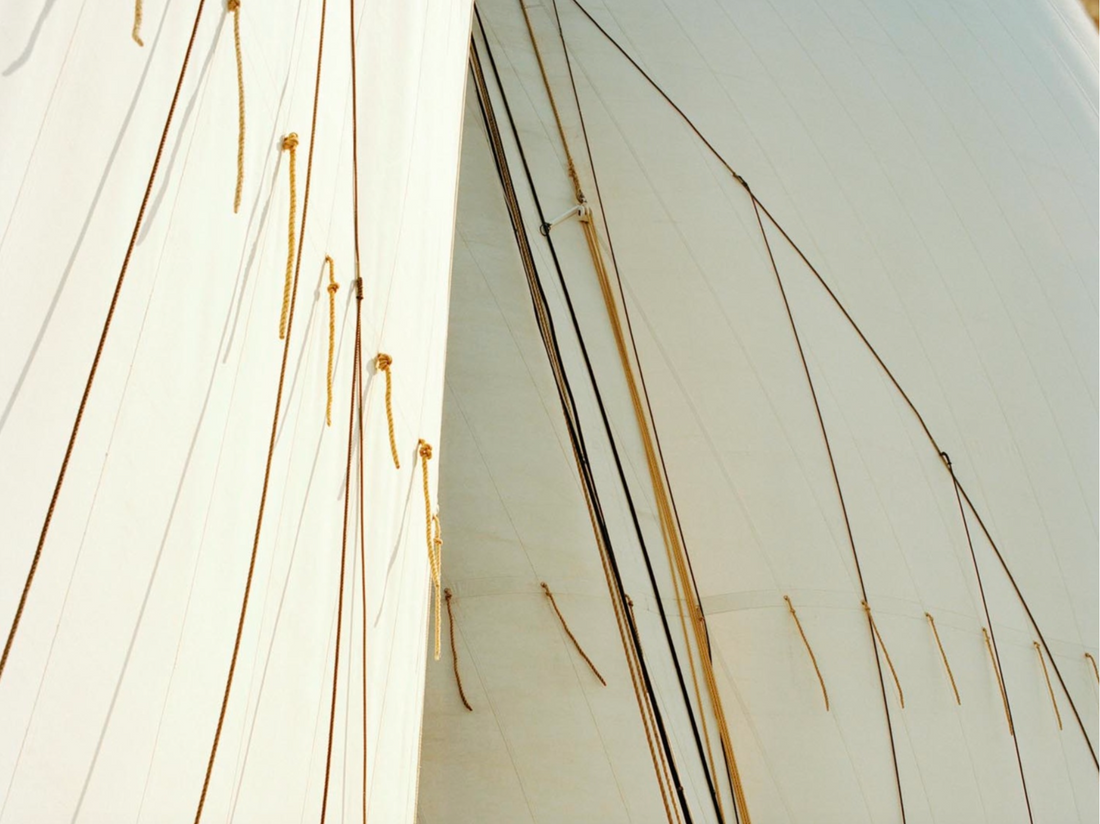
Making Waves: the story of Jeckells Sails
The old adage that we learn by our mistakes certainly proved true (and profitable) in the case of a humble fisherman from Great Yarmouth in Norfolk. Almost two centuries ago he inadvertently revolutionised the ways sails were made.
Short of money and unable to buy a new suit of sails the poor fisherman was compelled to make his own: as good luck would have it this turned his fortunes around. All of a sudden, as much to his surprise as the rest of the fishing fleet, the fisherman regularly became the first rather than the last fishing smack (boat) back to shore each day. This was a much prized slot because the first, and therefore the freshest, catch landed commanded the highest prices.

Intrigued as to how this could be, his fellow fishermen took a close interest in his boat and rigging which is how his mistake was discovered. The sails he had so carefully made were incorrect: the panels of fabric had been sewn together running in the opposite direction to everyone else’s. Unbeknown to Chris Jeckells this difference used the warp and weft of the fabric to its best advantage: by having the stronger of the two running sideways rather than up and down, the fabric was prevented from stretching quite so badly. This meant less wind was ‘spilled’ and the boat was able to travel faster.
Although this fact wasn’t appreciated at the time this new design was soon copied by fishermen impressed by the improved performance. It wasn’t long afterwards that the fisherman in question took the view that sail making – even in a draughty shed – was a safer way of earning a living than fishing in the inclement waters of the North Sea.
Want to read more of this article?
We are proud to be a subscriber-funded publication with members in 185 countries. We know our readership is passionate about textiles, so we invite you to help us preserve and promote the stories, memories, and histories that fabric holds. Your support allows us to publish our magazine, and also ‘what's on’ information, and subscription interviews, reviews, and long-read articles in our online blog.
ALREADY A SUBSCRIBER? CLICK HERE TO ACCESS CONTENT
OR...to continue reading….

*Magazine subscribers automatically get free access to all our online content. We send the access code by email with the publication of each issue. You will also find it on the envelope containing your magazine. Please note the access code changes every issue.*
Short of money and unable to buy a new suit of sails the poor fisherman was compelled to make his own: as good luck would have it this turned his fortunes around. All of a sudden, as much to his surprise as the rest of the fishing fleet, the fisherman regularly became the first rather than the last fishing smack (boat) back to shore each day. This was a much prized slot because the first, and therefore the freshest, catch landed commanded the highest prices.

Intrigued as to how this could be, his fellow fishermen took a close interest in his boat and rigging which is how his mistake was discovered. The sails he had so carefully made were incorrect: the panels of fabric had been sewn together running in the opposite direction to everyone else’s. Unbeknown to Chris Jeckells this difference used the warp and weft of the fabric to its best advantage: by having the stronger of the two running sideways rather than up and down, the fabric was prevented from stretching quite so badly. This meant less wind was ‘spilled’ and the boat was able to travel faster.
Although this fact wasn’t appreciated at the time this new design was soon copied by fishermen impressed by the improved performance. It wasn’t long afterwards that the fisherman in question took the view that sail making – even in a draughty shed – was a safer way of earning a living than fishing in the inclement waters of the North Sea.
Want to read more of this article?
We are proud to be a subscriber-funded publication with members in 185 countries. We know our readership is passionate about textiles, so we invite you to help us preserve and promote the stories, memories, and histories that fabric holds. Your support allows us to publish our magazine, and also ‘what's on’ information, and subscription interviews, reviews, and long-read articles in our online blog.
ALREADY A SUBSCRIBER? CLICK HERE TO ACCESS CONTENT
OR...to continue reading….

*Magazine subscribers automatically get free access to all our online content. We send the access code by email with the publication of each issue. You will also find it on the envelope containing your magazine. Please note the access code changes every issue.*
